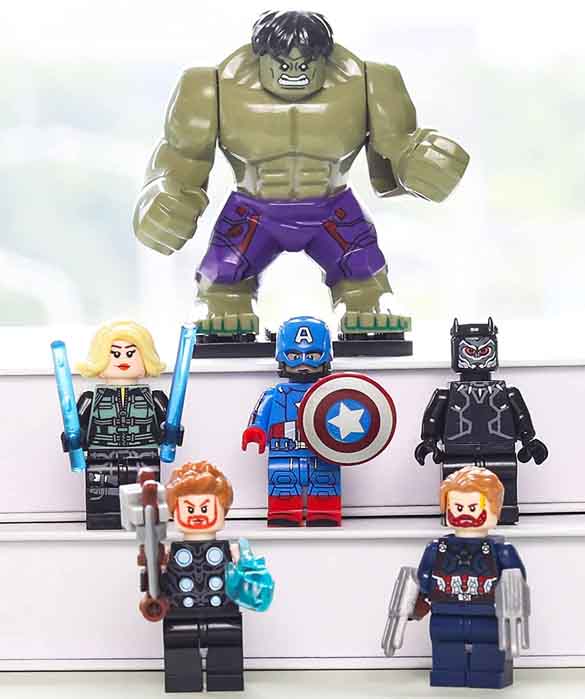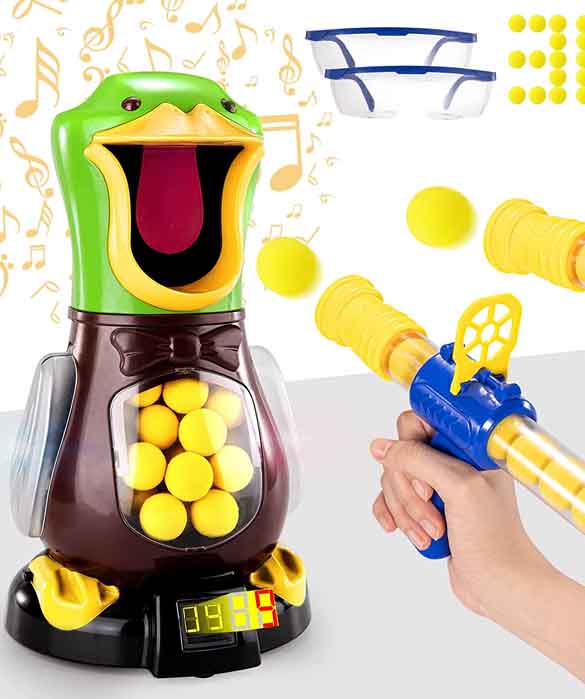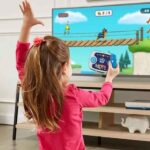As parents, caregivers, or educators, we want nothing but the best for our children. One of the most effective ways to support a child’s growth and development is through play. Not only is play fun, but it also promotes creativity, imagination, problem-solving skills, socialization, and cognitive development. And what better way to encourage play than by providing children with the best toys for kids ?
However, with the vast array of toys for kids available on the market, choosing the best ones for children can be overwhelming. It’s essential to consider factors such as a child’s age, interests, and developmental needs when selecting toys for kids. From educational toys to art and craft toys for kids, active and outdoor toys, and even electronic and tech toys, the options are endless. This is one of the Top Toy and Game Recommendations which we have discussed earlier in another blog post.
In this blog, we’ll explore some of the best toys for children across different age groups and interests. We’ll discuss the benefits of each type of toy and offer tips on how to select toys that best support children’s growth and development. Additionally, we’ll also cover cost-effective options for parents and caregivers who want to provide their children with the best toys without breaking the bank.

Age-Appropriate Toys for Infants and Toddlers
Choosing age-appropriate toys for infants and toddlers is crucial for their overall development. Infants and toddlers are constantly learning and exploring their surroundings, and toys can help them develop important sensory and motor skills. These skills are critical for their physical and cognitive development, and can lay the foundation for future learning.
When selecting toys for infants and toddlers, it’s essential to choose toys that are safe and developmentally appropriate. Infants and toddlers have different developmental needs, so it’s crucial to consider their age when selecting toys.
For infants, toys for kids that stimulate their senses and promote motor skills development are ideal. Toys with bright colors, high-contrast patterns, and different textures can help with visual and tactile development. Soft toys, such as stuffed animals or plush toys, can provide comfort and promote sensory development. Toys that can be grasped and manipulated, such as rattles, teething rings, and soft balls, can help with hand-eye coordination and fine motor skills.
Toddlers, on the other hand, are more active and require toys for kids that promote physical development, problem-solving, and creativity. Building blocks, stacking toys, and shape sorters can help with hand-eye coordination and problem-solving skills. Ride-on toys, such as push cars or scooters, can help with gross motor skills development. Art and craft toys, such as finger paints or play dough, can promote creativity and self-expression.
Additionally, toys for kids that encourage socialization and emotional development are also beneficial for infants and toddlers. Simple games, such as peek-a-boo or pat-a-cake, can promote socialization and bonding between parents and children. Toys that promote empathy and emotional regulation, such as dolls or stuffed animals, can help toddlers understand and express their emotions.
Educational Toys for Preschoolers
Educational toys for kids for preschoolers can be a valuable tool in promoting their cognitive, social, and emotional development. Preschoolers are at a stage where they are rapidly developing their abilities, and educational toys can help them learn while having fun.
When selecting educational toys for kids for preschoolers, it’s essential to choose toys for kids that are both age-appropriate and developmentally appropriate. Preschoolers are at a stage where they are developing their cognitive abilities, including memory, problem-solving, and language skills. Toys for kids that promote these skills are ideal for preschoolers.
Puzzles, for example, are great toys for developing problem-solving skills. As preschoolers work on fitting the pieces together, they learn to think critically and develop their problem-solving abilities. Board games can also be great for promoting cognitive development, as they help preschoolers learn to follow rules and take turns.
Language skills are another critical area of development for preschoolers, and educational toys can help with this. Books and reading materials that are interactive can help preschoolers learn to recognize letters and words, and they can also help to promote a love of reading. Toys that encourage pretend play, such as dress-up clothes or play kitchens, can also help with language development, as preschoolers learn to use language in a variety of contexts.
Mathematical skills are also important for preschoolers, and educational toys can help with this as well. Building blocks or construction toys can help preschoolers learn about shapes and patterns, while number games can help them learn to count and understand basic mathematical concepts.
Building and Construction Toys for Young Kids
Building and construction toys for kids are a great way to encourage creativity, problem-solving, and spatial awareness in young children. These types of toys help children develop their fine motor skills, hand-eye coordination, and visual-spatial abilities, making them ideal for young kids who are just starting to learn and explore their environment.
When choosing building and construction toys for kids for young children, it’s important to consider the child’s age and developmental level. Toys that are too complex can frustrate and discourage children, while toys that are too simplistic can become boring and unengaging.
For very young children, building and construction toys should be simple and easy to manipulate. Soft blocks, for example, are great for infants and young toddlers, as they are easy to hold and stack. These types of toys also help with hand-eye coordination and gross motor skills development.
As children get older, they can graduate to more complex building and construction toys for kids . LEGO sets, for example, are popular building toys that are great for kids of all ages. Young children can start with LEGO Duplo sets, which feature larger, easier-to-handle pieces. As they grow and develop, they can move on to standard LEGO sets, which offer more complexity and a greater challenge.
Other building and construction toys for kids , such as marble runs and building sets, are also great for young kids. These toys promote problem-solving and critical thinking, as children must figure out how to build structures that will support the weight of marbles or other objects. They also help with hand-eye coordination and fine motor skills development.

Art and Craft Toys for Kids
Art and craft toys are a fantastic way for children to express themselves creatively while also developing their fine motor skills, hand-eye coordination, and cognitive abilities. These types of toys allow children to experiment with color, texture, and shape, and can help foster a love of artistic expression and creativity. There are a variety of art and craft toys available for children of all ages, from simple coloring books and crayons to more complex jewelry-making kits and pottery sets. For very young children, art and craft toys should be simple and easy to manipulate. Finger paints and washable markers, for example, are great for toddlers, as they are easy to hold and use.
As children get older, they can progress to more complex art and craft toys. Modeling clay and play dough, for example, are great for children to experiment with shaping and sculpting. These types of toys help develop fine motor skills and promote hand-eye coordination.
Drawing and painting sets are also popular art and craft toys for children of all ages. These types of toys allow children to experiment with different colors and textures, and can help develop their creativity and imagination. They also help with hand-eye coordination and fine motor skills development. More complex art and craft toys, such as jewelry-making kits and pottery sets, are also great for older children. These types of toys allow children to create and design their own unique pieces of jewelry or pottery, and can help develop their problem-solving and critical thinking skills.

Active and Outdoor Toys for Kids
Active and outdoor toys are a great way for children to stay physically active, explore the world around them, and have fun at the same time. These types of toys help promote gross motor skills development, hand-eye coordination, and overall physical fitness.
There are many types of active and outdoor toys available for children of all ages. For young children, simple toys like balls and jump ropes are great for promoting physical activity and coordination. Riding toys like tricycles and balance bikes are also great for young children, as they help develop gross motor skills and promote physical activity.
As children get older, they can progress to more complex active and outdoor toys. Scooters, skateboards, and roller skates are popular choices for older children, as they offer a greater challenge and require more physical skill. These types of toys can also help children develop balance and coordination.
Sports equipment, such as soccer balls, basketball hoops, and baseball gloves, are also great active and outdoor toys for children of all ages. These toys encourage children to engage in team sports and promote physical activity, while also helping to develop social and emotional skills like teamwork and sportsmanship.

Role-Playing and Pretend Play Toys for Kids
Role-playing and pretend play toys are a great way for children to use their imagination and creativity while also developing social, emotional, and cognitive skills. These types of toys encourage children to explore different roles and scenarios, which helps them develop empathy and social skills while also having fun.
There are many types of role-playing and pretend play toys available for children of all ages. For young children, simple toys like play kitchens, doctor kits, and tool sets are great for promoting imaginative play and creativity. These toys help children explore different roles and develop their social and emotional skills, as they learn to interact with others in different scenarios.
As children get older, they can progress to more complex role-playing and pretend play toys. Dress-up sets and playhouses, for example, allow children to immerse themselves in different roles and scenarios, which helps them develop empathy and social skills. These toys also encourage children to engage in cooperative play, which promotes teamwork and problem-solving skills.
Board games and card games are also great role-playing and pretend play toys for children of all ages. These types of games encourage children to think creatively and strategically, while also helping them develop social and emotional skills like teamwork, sportsmanship, and empathy

Cost-Effective Toys for Kids
Finding cost-effective toys for kids can be a great way to save money while still providing children with hours of fun and developmental benefits. These types of toys are often simple and straightforward, but still provide children with a range of educational and developmental benefits.
One example of a cost-effective toy is building blocks. These simple toys provide children with a fun and engaging way to develop their fine motor skills and problem-solving abilities. Children can use building blocks to create a wide range of structures, which helps develop their spatial awareness and creativity.
Another cost-effective toy is coloring books and crayons. These simple toys offer children a fun and creative outlet for their artistic expression, while also helping to develop their fine motor skills and hand-eye coordination. Children can experiment with different colors and textures, and can even use their coloring books to explore different concepts like letters, numbers, and shapes.
Outdoor toys like balls, jump ropes, and frisbees are also great cost-effective options. These toys promote physical activity and coordination, and can be used in a variety of settings, from the backyard to the park.
Conclusion
In conclusion, there are many different types of toys available for children, each with their own unique benefits and features. From age-appropriate toys for infants and toddlers to educational toys for preschoolers, building and construction toys for young kids, art and craft toys, active and outdoor toys, role-playing and pretend play toys, and cost-effective toys, there is something for every child.
It’s important to choose toys that are safe, age-appropriate, and provide children with opportunities to learn and develop while having fun. With so many options available, parents and caregivers can help children find the toys that are perfect for their individual interests, skills, and developmental needs.
What are the best toy options for boys in different age groups?
The best toy options for boys vary depending on their age group. For infants and toddlers, toys that promote sensory exploration, such as soft toys, shape sorters, and rattles are ideal. Preschool boys benefit from toys that encourage imaginative play and creativity, such as building blocks, playsets, and art supplies.
For school-aged boys, toys that promote physical activity, problem-solving skills, and social interaction are excellent choices, such as sports equipment, board games, and STEM-based toys. Teenage boys enjoy more complex toys and games, such as remote control cars, video games, and model building kits, which challenge their skills and interests. Regardless of age, boys benefit from a range of toys that promote different forms of development and encourage curiosity and exploration.
How to choose toys that are safe for boys to play with?
Toys should be age-appropriate and free of small parts that could be choking hazards. Look for toys made of non-toxic materials and that have been certified as safe by reputable organizations. Avoid toys with sharp edges, electrical components or that could break easily. Always read and follow the manufacturer’s instructions and supervise children while they play. Additionally, regularly check toys for signs of wear and tear and discard or repair them as needed.






